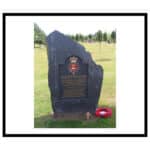All timeline stories.
Finland 2022
‘B’ (Balaklava) Squadron make it to the Finish Challenger 2 tanks and troops from the Queen’s Royal Hussars worked alongside members of the Finnish Armoured Brigade and American, Latvian and Estonian allies as the military alliance today flexed its muscles in response to Russian aggression. ‘B’ Squadron deployed to Finland in May 2022 on Ex ARROW 22 alongside forces from Finland, Latvia, US and Estonia. The war games, dubbed Exercise Arrow, will see Nato troops work alongside Finnish units to…

